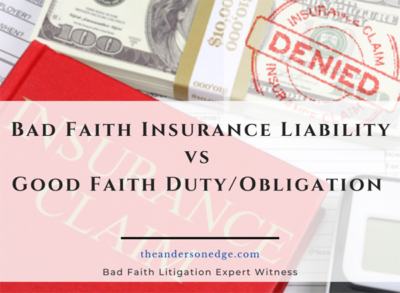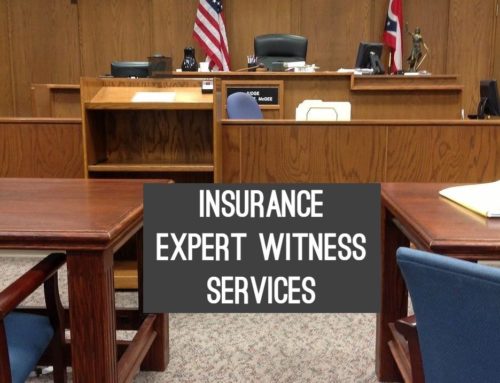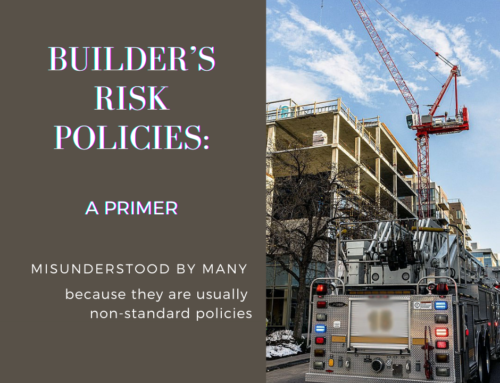Bad Faith Insurance Liability
… vs …
Good Faith Duty/Obligation
By TheAndersonEdge | Published September 20th, 2021
Bad faith insurance claim handling involves the mistreatment of consumers and businesses by insurance carriers that may fail to follow their good faith duty and obligation to pay a legitimate claim. Bad faith refers to the methods insurance companies employ to evade their contractual obligations to their policyholders. Usually, it applies to situations where an insurance company refuses to settle a claim in conformance with the terms of the insurance contract with the insured—typically denying reasonable or reasonably expected benefits.
Bad Faith Insurance Liability vs Good Faith Duty / Obligation
Numerous insurance companies customarily utilize statistics and trend analysis when determining how much to payout, even if the insurance policy entitles the insured to recover more money from the company. The insurer may refuse to pay out the policy if their statistics and analysis indicate that they will save money by not paying what is owed.
Often an insurer simply doesn’t believe their policyholder, and takes a “denial” posture. Unfortunately, carriers are commonly and routinely faced with fraudulent claim activity. Claim handlers can become a little “callous,” at times and some take that approach to the extreme. They start looking for ways to deny the claim, instead of following their good faith duty to find a way to pay a claim.
Both of these approaches often force the insured to either go without, take less/compromise, or take their insurer to court for bad faith.
Bad Faith Insurance Claims vary by State
Bad Faith Insurance claims vary from state to state. Traditionally, almost all states allow for compensatory damages, which are intended to compensate the insured and put them in the same position they would have been in had the insurance company paid out appropriately. Most states allow for punitive damages – intended to punish the insurance company’s bad conduct. Depending on the state, punitive damages may have a limit, while there are often no caps or maximums in others. Some states also allow for the recovery of other bad-faith damages, [1] emotional distress, and attorneys’ fees.
Click this link to access Bad Faith Insurance Claims Survey – All 50 States – 2021 an excel PDF file with details for all 50 States. You can scroll and enlarge the PDF for easy reading. It features the States in alphabetically order, the 1st Party COA, 3rd Party COA, Statute of Limitation, and Damages Recoverable.
The Basic Rule
Policyholders frequently assert bad-faith claims against insurers because they are typically entitled to consequential damages beyond the policy limits, and in some cases, they can recover punitive damages. Various states have statutes or regulations that govern an insurance company’s bad faith. Insurer’s bad faith can be subject to statutory damages, penalties, and punitive damages on top of the compensatory damages. The exact laws affecting insurance company bad faith differ by state.
Traditional Bad Faith
Traditionally, Bad Faith Insurance claims are based on an insurer’s refusal to compensate the policyholder for a loss covered by the policy when coverage cannot reasonably be disputed.
States can differ on the recovery of both first and third-party bad faith damages.
First-party bad-faith occurs in cases with the company’s own policyholder or one covered by the original contract between the insured and the company. This happens when an insurer refuses to pay a claim without a reasonable basis or without a thorough and timely investigation of the claim. As an example, say your house floods from a burst water pipe. Your insurance policy explicitly covers the loss. Upon calling, the company says that you cannot make any repairs until their investigation happens. Then, your insurer never visits the site of the loss and stops responding to all forms of contact and correspondence.
Another common first-party bad faith scenario is when an insurance company fails to settle a claim made against its’ policyholder and subjects them to liability above and beyond their policy limits. Often this involves a policy limit demand that is missed or ignored, and the third-party claimant secures a large verdict against the policyholder.
Third-Party Insurance Bad Faith Claims
Third Party Bad Faith claims [2] happen when an insurance company mishandles the claim of someone other than their own policyholder. In states that allow third party bad faith, a claimant can sue the insurance company (in this case, not theirs) if they feel they have been mistreated. Most commonly this happens when the original company makes a settlement offer much lower than the third-party claimant feels is reasonable.
Procedural Bad Faith
There are some cases where coverage is properly denied, but the insurer denies the coverage in an unreasonable way to the policyholder. States recognize claims alleging such unreasonable conduct by the insurer as ones for “procedural bad faith”. [3] The allegations for such claims are based on the insurer “engaging in oppressive and intimidating claim practices” in the investigation, handling, or denial of claims. [4] Even if a claim is properly denied, there can be procedural bad faith – meaning that an insurer can potentially use methods and procedures the policyholder considers “oppressive or intimidating” in a claim that is appropriately denied or paid.
Expert Witness in Bad Faith Litigation
Expert witnesses play a critical role in coverage and bad faith litigation for policyholders and insurers alike. An expert witness with developed in-depth knowledge of good faith claims principles and how the insurance company violated or adhered to them in a case is essential for any bad-faith litigation. Also, the ability to predict or establish a defense that the insurers’ conduct was reasonable or unreasonable under the circumstances is vital. Lastly, hire the expert witness early as this enhances credibility and allows the expert to review the file and feel comfortable with the position.
For article references and image credits – please see below or view article on the website.
Need help with litigation cases involving insurance?
Call 1 949 645-6842 for a complimentary 30 minute phone consult or email Robert Anderson today.
References & Credits:
1 Lindenberg v. Jackson Nat’l Life Ins. Co., 912 F.3d 348 (6th Cir. 2018)
2 Only some states allow Third-Party Bad Faith Claims.
3 Interstate Fire & Cas. Co. v. Apartment Mgmt. Consultants LLC, 328 F. Supp. 3d 1242 (D. Wyo. 2018)
4 Interstate Fire & Cas. Co. v. Apartment Mgmt. Consultants LLC, 328 F. Supp. 3d 1242 (D. Wyo. 2018)
Images – Courtesy Attribution
Photo: RODNAE Productions
Photo Adaption: Nick Youngson CC BY-SA 3.0 Pix4free




